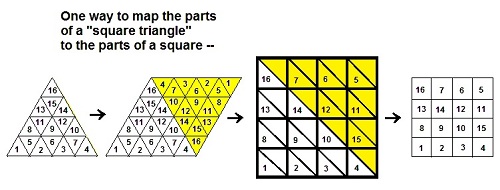On Feb. 11, Christian Lawson-Perfect posed an interesting question
about mappings between square and triangular grids:
For the same question posed about non -continuous bijections,
see "Triangles are Square."
I posed the related non– continuous question in correspondence in
the 1980's, and later online in 2012. Naturally, I wondered in the
1980's about the continuous question and conformal mappings,
but didn't follow up that line of thought.
Perfect last appeared in this journal on May 20, 2014,
in the HTML title line for the link "offensive."


















